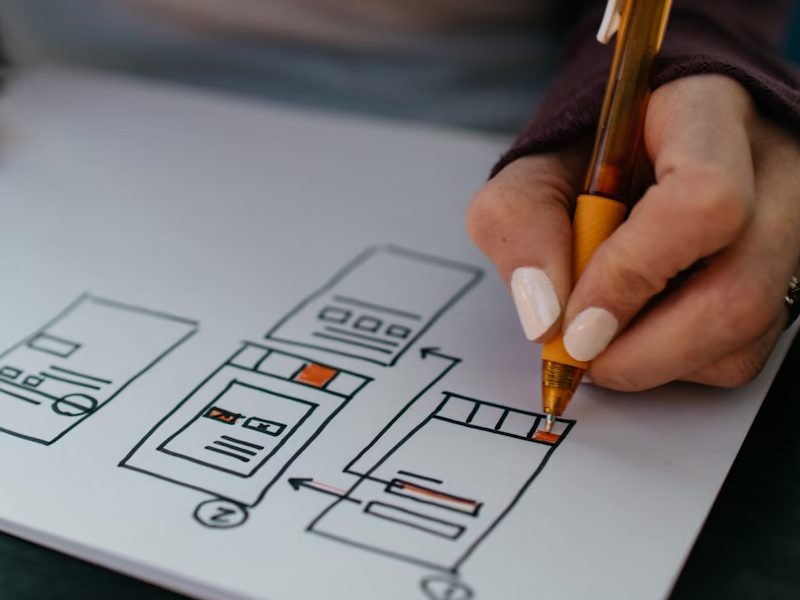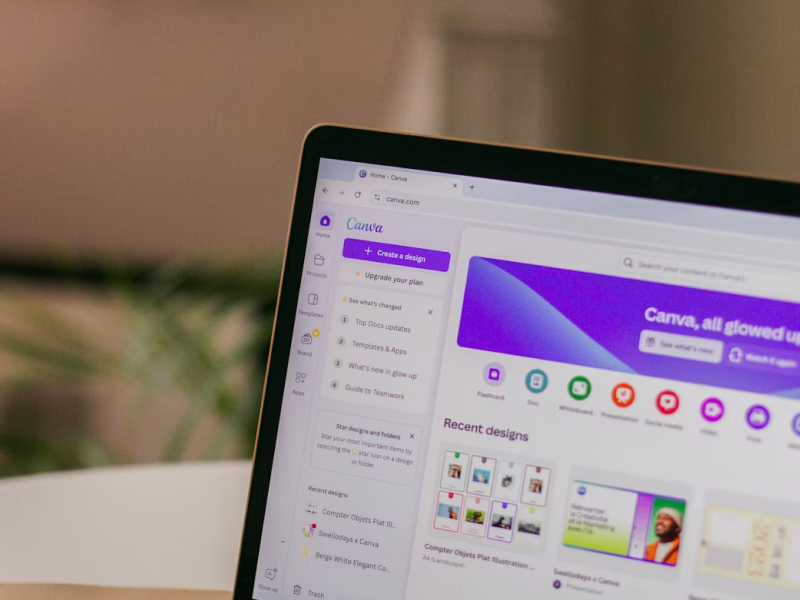Do you know what keeps users engaged? Do you have an eye for aesthetics? Would you consider yourself to be an empathetic individual who is also good at solving problems? If you answered yes to these questions, you might be the ideal candidate for a UI/UX designer role!
It has never been a better time to consider a career in UI/UX design. The demand is high, the salaries are rewarding and the opportunities are seemingly endless. Creativity is the driving force in when it comes to app and web design and it is unlikely that you will get bored. But first, we have to make ourselves familiar with the elementary concepts of this field.
UI designers and UX designers are very often seen together because they complement each other. However, it is important to understand that UI/UX designers are by no means the same. UI design stands for user interface and deals with the visual and interactive components of a product design that create visually pleasing interfaces. On the other hand, UX design refers to the user experience. This is carefully crafted after analyzing the audience's preferences and behavior.
Compared to the two fields, a UI/UX designer has a more complex job. They need to ensure an app or web design can be easily navigated. At the same time, they are responsible for their visual aspect too. There are certain specific skills and attributes that any user experience and the user interface designer should have.
- Research Skills. This is a crucial part of a UI/UX designer’s job as we need to understand what their users want. Research can be done in various ways, from interviews to surveys and focus groups. This is why research skills are a must.
- Design Skills. The visual side of the design is something any UI/UX designer has to tackle. Hence, we have to be very familiar with design principles such as color theory, layouts, and composition.
- Wireframing And Prototyping. Wireframes are visual representations of a page’s layout for a site. Prototyping refers to the creation of samples that are tested by the UI/UX team before a launch. These two processes are very common in the design world.
- Communication. One of the most important soft skills that all UI/UX designers need to have is the ability to communicate well. We constantly collaborate with other designers and members of the team for better results. A good designer can receive and provide feedback.
- Empathy. This skill is particularly useful for the UX design part of the design process. If we want to understand the psychology behind why our users prefer certain things, we need to have empathy. After studying consumer behavior, we should be able to mirror their needs through our designs.
- Problem Solving. You never know when a challenge will arise and that is completely fine. What matters is that when trouble arises, we have the necessary resources to come up with creative solutions.
If the world of UI/UX design feels like an interesting career path that you would like to follow, you can check out our step-by-step list of things you can do to land a job in this field.
- Learn The Basic Concepts
Just like in any other area, you will first need to get familiar with the basics. From the UX principles to the visual design elements, you have to know them all before you embark on this journey. They will serve as a foundation for you to continue building on.
There are different ways in which you can get accustomed to these concepts. Whether it is a series of online courses or you work alongside an experienced designer, find what learning method suits you better.
- Study The Tools
After you complete the first step, you should focus your attention on learning the more practical side of UI/UX design. Surely, the theory is important, but you will need to know exactly how wireframing, prototyping and other processes work.
Make a habit of looking out for tools that could help you enhance your work. From Figma to Adobe XD, to Sketch, you can find various platforms that allow you to exercise your newly developed UI/UX skills.
- Immerse Yourself In Design
Design is all around us. Are you passionate about mobile app design? Then download a variety of apps and study their designs. Find out which ones you like and try to grasp what makes them great for you. It is crucial to study as many pages as possible because they train your eye to identify good design.
There are so many elements that are not apparent at first glance. Sometimes the smallest details such as the size of the white space or the hierarchy of the entries in a menu can take design to the next level. Surround yourself with design so that you can become a great UI/UX designer.
- Take Inspiration From Others
It is often difficult to start when you do not have any experience. Do not let that scare you! Inspiration is all around us, especially in other designers’ work. A common practice is to take somebody’s work that you enjoyed and try to reproduce it. This is a great exercise as it allows you to execute what you have learned while having a bit of guidance.
There are many online resources that you can access for inspiration, such as Behance and Dribbble. These platforms allow designers to upload their work for others to see.
- Gain Experience
You have now gone through the documentation phase and are ready to start working on projects that you will use in your resume. Even if you choose to draw inspiration from various UI/UX designers, you must make your projects your own. Displaying work that is too similar to other designers is a red flag.
You can start designing projects that match your interests if that helps you with your creativity. It is also great to ask for feedback during this stage. An outsider's perspective might be just what you need to take your projects to the next level.
- Create a Portfolio
This is an instrumental part of the process as your portfolio determines whether you will land a job or not. This resume should contain the projects you feel are best executed. It should also be able to reflect as many of your skills as possible.
Think about a portfolio as the first impression an employer will gather from you. This is your business card, so it should be carefully and strategically crafted. If you feel like your portfolio is not substantial enough, you can always volunteer to gather more projects.
- Networking
The final step consists of applying for UI/UX designer jobs. However, what happens when you do not seem to be getting a lot of interviews? Even though it is important to be present on social media platforms such as LinkedIn, sometimes this is not a guarantee that you will receive many callbacks.
A great method of scouting for jobs is to practice networking. There are many ways in which you can meet people who are active in your field of interest. Conferences, seminars, online forums, and social media are all opportunities for finding other UI/UX designers. Be open to new opportunities because you never know what lies ahead!
We at uinkits understand the importance of inputs in great user experiences and creating amazing UI designs. That’s why we’ve developed a Figma UI Kit with design components that include these essential UI elements that enable you to design intuitive and user-friendly interfaces effortlessly.
“You press the button, we do the rest.” – Kodak.
Inspired by this iconic tagline from Kodak, we believe in simplifying the design process for you. Our Figma UI Kit, uinkits, is a complete design system with UI components that allows you, as a UI UX designer, to create your products as quickly as pressing a button.
Our design system includes UI components, icons, variables, cards, buttons and everything you need for your design process. All you have to do is take your UI design component needed, and you’re ready to use it in your designs!








